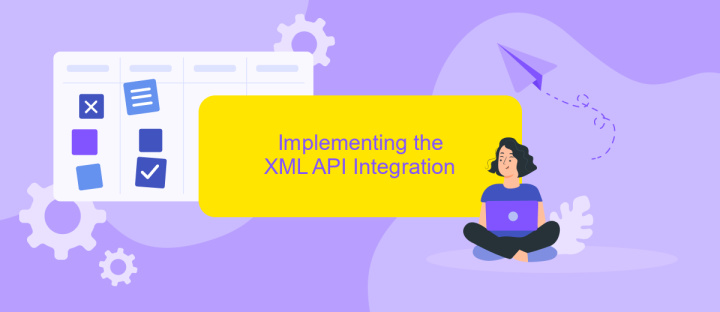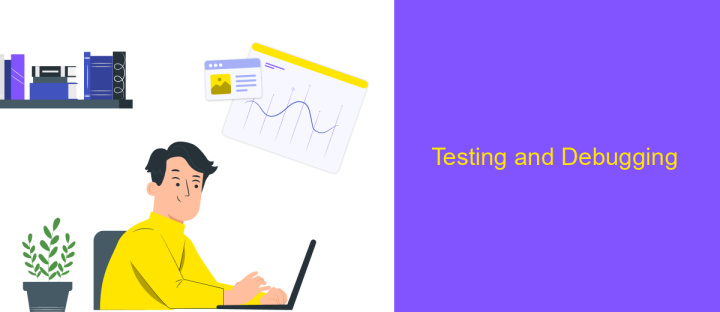XML API Integration
XML API integration is a crucial component in modern software development, enabling seamless communication between different systems and applications. By leveraging XML-based APIs, developers can facilitate data exchange in a structured and efficient manner, enhancing interoperability and scalability. This article explores the fundamentals of XML API integration, its benefits, and best practices to ensure a smooth implementation, empowering businesses to optimize their digital ecosystems.
Understanding XML and APIs
XML, or eXtensible Markup Language, is a versatile format used to encode documents in a way that is both human-readable and machine-readable. It is widely used for data representation and storage, allowing for the separation of data from presentation. APIs, or Application Programming Interfaces, facilitate communication between different software applications, enabling them to exchange data and perform functions seamlessly. Understanding XML and APIs is crucial for effective data integration and automation in various domains.
- XML provides a structured format for data interchange.
- APIs enable interaction between different software systems.
- XML APIs allow for flexible and scalable data integration.
- Both XML and APIs are essential for modern web services.
By leveraging XML and APIs, developers can create robust applications that interact with multiple services and platforms. XML's hierarchical structure makes it ideal for representing complex data, while APIs provide the necessary protocols for data exchange. Together, they form the backbone of many integration solutions, enabling businesses to streamline operations and enhance connectivity across systems. Understanding these technologies is vital for anyone involved in software development and data management.
Planning Your XML API Integration

When planning your XML API integration, the first step is to clearly define your objectives and requirements. Consider what data you need to exchange and how frequently this will occur. Assess the technical capabilities of your team and the existing infrastructure to ensure compatibility with the API you intend to integrate. It’s crucial to outline a timeline that accommodates testing and potential troubleshooting, allowing for a smooth transition. Additionally, allocate resources for ongoing maintenance and updates, as APIs often evolve.
Choosing the right tools and services can significantly streamline the integration process. Platforms like ApiX-Drive offer user-friendly solutions that simplify connecting different applications through APIs. With ApiX-Drive, you can automate data transfers without extensive coding knowledge, making it an ideal choice for businesses looking to enhance efficiency. Ensure you have a comprehensive understanding of the API documentation and establish a robust support system to address any issues promptly. Proper planning will not only save time but also ensure a successful and sustainable integration.
Implementing the XML API Integration

Integrating an XML API into your system can enhance functionality and streamline data exchange. The process involves several key steps that ensure a seamless connection between your application and the API. Proper implementation requires careful planning and execution to maximize the benefits of XML API integration.
- Begin by reviewing the API documentation to understand its capabilities and requirements. This step is crucial for identifying necessary endpoints and data structures.
- Set up a development environment where you can safely test the API integration without affecting live data. This environment facilitates debugging and ensures smooth implementation.
- Write code to send and receive XML data, ensuring it adheres to the API's specifications. This involves crafting precise requests and handling responses efficiently.
- Test the integration thoroughly to identify and resolve any issues. This includes validating data accuracy and checking for potential errors in communication.
- Deploy the integration to the production environment once testing is complete and the system operates as expected.
Successful XML API integration can significantly enhance your application's capabilities, providing access to external data and services. By following a structured approach, you can ensure that the integration is robust, efficient, and scalable, meeting both current and future needs.
Testing and Debugging

Testing and debugging are crucial steps in ensuring the successful integration of XML APIs. During the testing phase, it is essential to simulate various scenarios to validate the API's functionality and reliability. This involves checking how the API handles different types and sizes of data, as well as assessing its response times.
Debugging, on the other hand, involves identifying and resolving any issues that arise during testing. It requires a thorough understanding of the API's structure and behavior. Developers should use logging tools to track API requests and responses, which can provide insights into any errors or unexpected behavior.
- Validate XML schema to ensure data consistency.
- Use automated testing tools for efficient error detection.
- Implement version control to track changes and updates.
- Monitor API usage to identify potential bottlenecks.
By systematically testing and debugging the XML API, developers can ensure a seamless integration process. This proactive approach minimizes the risk of runtime errors and enhances the overall user experience. Regular updates and maintenance further contribute to the API's robustness and efficiency.


Deployment and Maintenance
Deploying an XML API integration involves several crucial steps to ensure a smooth and efficient process. Initially, it is essential to set up a testing environment to identify potential issues before going live. This involves configuring the necessary endpoints and ensuring that all data exchanges are secure and reliable. Tools like ApiX-Drive can be invaluable during this phase, as they offer seamless integration solutions and help streamline the deployment process. Their user-friendly interface allows for quick adjustments and troubleshooting, reducing the time needed to achieve a stable integration.
Once deployed, maintaining the XML API integration is vital to ensure continued functionality and performance. Regular monitoring of data flow and error logs is necessary to promptly address any issues that arise. Additionally, staying updated with any changes in the API specifications or updates from the service providers is crucial. ApiX-Drive can assist in this maintenance phase by providing automated alerts and updates, ensuring that your integration remains robust and up-to-date. Routine audits and performance checks will further help in maintaining the integrity and efficiency of the integration over time.
FAQ
What is XML API Integration?
How do I start integrating an XML API with my application?
What are the common challenges faced during XML API Integration?
How can I automate the process of XML API Integration?
What is the importance of error handling in XML API Integration?
Do you want to achieve your goals in business, career and life faster and better? Do it with ApiX-Drive – a tool that will remove a significant part of the routine from workflows and free up additional time to achieve your goals. Test the capabilities of Apix-Drive for free – see for yourself the effectiveness of the tool.

